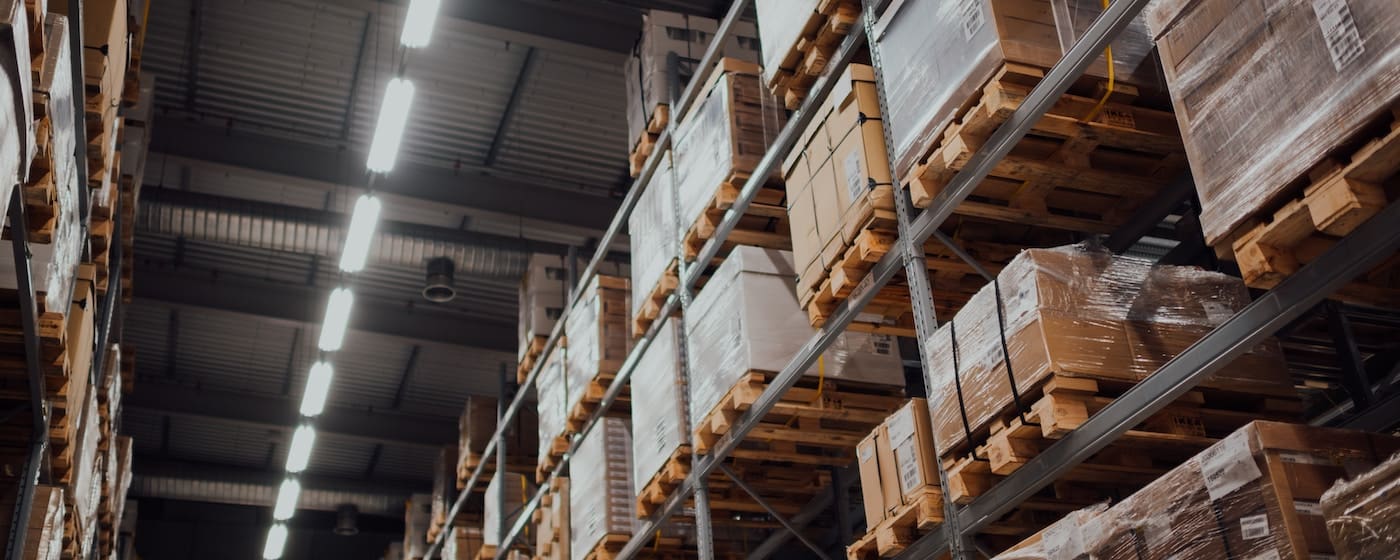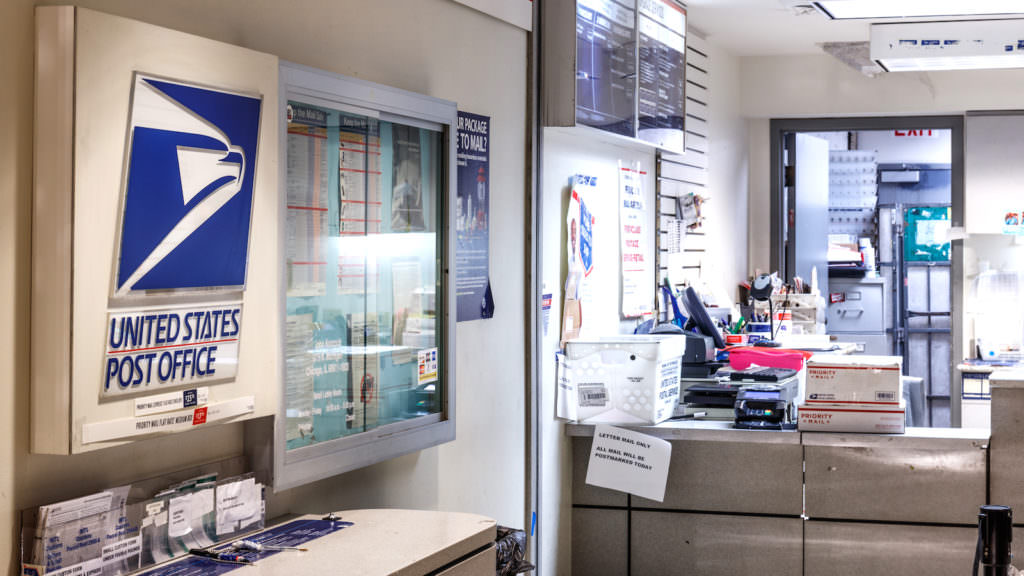Table of Contents
** Minutes
What is multi-echelon inventory optimization?
Why more and more ecommerce businesses are switching to MEIO
How to gauge your need for multi-echelon inventory optimization
Common challenges when implementing MEIO
ShipBob bridges the gap between traditional and multi-echelon inventory optimization
A big portion of running a successful ecommerce business is managing inventory while minimizing costs.
Inventory optimization can be a challenge, but fortunately, the limitations of traditional methods of tracking inventory are not the only option for growing online businesses, as supply chains have become more complex.
For example, multi-echelon inventory optimization is a modern method to managing inventory across your entire supply chain. This method helps to reduce costs and optimize inventory levels.
In this article, we show you how you can achieve optimal inventory management by implementing the multi-echelon method. Let’s get started.
What is multi-echelon inventory optimization?
Multi-echelon inventory optimization (MEIO) is the process of optimizing inventory levels throughout different stages of the entire supply chain.
It involves real-time inventory tracking and the right systems to communicate accurate data across the ecommerce supply chain.
This is a common integrated logistics approach when dealing with mutli-channel distribution retailing and multiple warehouses or fulfillment centers.
Multi-echelon inventory optimization (MEIO) vs. traditional inventory optimization (IO)
In traditional inventory optimization (IO), inventory levels are optimized independently at each stage of the supply chain. When inventory is received at a single location, only that location will have updated inventory data based on what has been counted for manually.
Meanwhile, the MEIO approach is a more comprehensive inventory management solution that involves optimizing inventory levels across an entire supply chain.
In this case, inventory management tools and warehouse management software (WMS) are implemented to make real-time inventory analytics accessible for different teams and distribution/fulfillment locations, and even multiple retailers for B2B ecommerce.
Why more and more ecommerce businesses are switching to MEIO
Although traditional inventory optimization practices may be easier and more straightforward than a multi-echelon method, they’re no longer suitable as supply chain management has become more complex.
The changes implemented at one stage may not align with the inventory data at another stage. This can cause inventory discrepancies, leading to a multitude of issues once orders are placed.
Here is an overview of why more online businesses are switching to MEIO.
Better cost savings
Traditional inventory optimization is prone to stock imbalances that can be expensive to manage.
For example, you may keep extra inventory on hand (known as “safety stock“) at one location, but have too much inventory stored at a different distribution center.
Inaccurate inventory data across the supply chain can also lead to phantom inventory, which refers to having a discrepancy between inventory recorded and physical inventory count.
With MEIO, investing in supply chain technology helps monitor inventory flow and maintain optimal stock levels. Not only do you get better visibility, but you’re also given accurate data to work with to make better judgement calls to forecast demand.
As a result, you’re not spending money on inventory you don’t need, you’re able to optimize warehouse capacity, and reduce risk of overstocking or stockouts.
More responsive supply chains
A multi-echelon approach to inventory optimization allows you to maintain inventory levels at different locations based on demand.
This means supply chain responsiveness improves as you have sufficient stock at different points in your distribution network to handle demand volatility more effectively.
For example, let’s say you store inventory across three fulfillment centers. If a fulfillment center runs out of inventory, an order placed can be fulfilled at a different location to cover the order.
Additionally, you can replenish inventory sooner than later to make sure future orders can be fulfilled at the closest location from the customer.
Improved lead time management
Unforeseen events can lead to unexpected changes in lead times, which may result in stock shortages.
When inventory levels are optimized at one stage of the supply chain, any changes in lead time can cause serious issues further down the line.
With MEIO, inventory data can provide historical information to help create an inventory replenishment schedule to maintain proper inventory levels based on both manufacturing/supplier lead times and demand.
Enhanced customer experiences
The key to a great customer experience is making sure orders can be picked, packed, and shipped as soon as possible.
Stockouts and backorders can be detrimental to this experience as it means customers can’t get what they need when they need it, leading to canceled orders.
With MEIO, you can effectively meet customer demand by more accurately forecasting inventory needs and planning for sufficient stock.
Real-life examples of multi-echelon inventory optimization in action
Caterpillar has been able to reduce scrap by 50% after implementing a MEIO approach. This is a direct result of having better visibility into their customer forecasts, which allows them to make informed decisions about procurement.
It also means that they weren’t stocking inventory in excess or procuring inventory they didn’t need.
For Oxford Healthspan, an online brand and ShipBob customer, having end-to-end inventory visibility thanks to the ShipBob dashboard allowed them to anticipate issues and prevent them before they escalate.
They’ve also been able to make strategic decisions about how to distribute inventory to best meet customer demand.
“After switching to ShipBob, we instantly had much more transparency. Unlike our last 3PL, ShipBob has integrity of information and end-to-end order tracking, from receiving to fulfillment to shipping. Now every single day when I check our dashboard, I know exactly what’s happening with our orders.”
Maria Osorio, Logistics and Operations Director at Oxford Healthspan
How to gauge your need for multi-echelon inventory optimization
For those still relying on traditional inventory optimization strategies and wondering if there’s a need to switch to a MEIO approach, a look at inventory reports can help make the best decision.
In some cases, small businesses with simpler supply chains don’t necessarily need to use this method if their current system is working fine. However, not having proper inventory visibility can increase carrying costs, stockout costs, and more.
If you’re experiencing inventory issues across various stages of the supply chain, it could indicate a need for multi-echelon inventory optimization.
For example, high supply chain costs may be an indicator of issues in several areas of the supply chain. You may be spending too much on holding costs because you’re not planning your procurement accurately and holding too much excess inventory.
Regular stockouts could also indicate that you’re not accurately forecasting demand and replenishing your inventory soon enough.
Similarly, a high backorder rate means your business isn’t fulfilling customer orders fast enough. This is likely caused by stockouts as well, which means that you’re not maintaining optimal inventory levels across the supply chain.
On the other hand, too much deadstock and slow inventory turnover rate indicates that you’re ordering more inventory than you actually need.
Setting up key inventory KPIs and tracking productivity, costs, and accurate rate across your supply chain is the best way to identify issues. If you find that the lack of real-time inventory management is the cause of issues, it might be time to introduce MEIO.
Common challenges when implementing MEIO
Implementing a multi-echelon inventory optimization system can be a complex and time-consuming process if you don’t have the right support team.
Be prepared to experience the following common challenges when implementing MEIO.
Data management
Part of effective MEIO implementation is visibility throughout every stage of the supply chain. Real-time inventory data must be shared accurately across logistics operations.
This is key to MEIO work as is provides accurate data to make better decisions and collaborate with other teams, such as a third-party logistics.
However, managing and sharing this data can be a major challenge since there may be separate inventory policies and controls for each tier of the supply chain.
Businesses must work to maintain data security within each stage while making sure every team has the information they need to effectively monitor and manage inventory.
Supplier coordination
Ecommerce businesses may also experience challenges when coordinating with suppliers to implement multi-echelon inventory optimization.
Every supplier working with the business must be included in the implementation since they play a vital role in optimizing inventory levels.
In many cases, suppliers may be required to adopt new systems and technologies to support the new inventory optimization methods and allow for better coordination, which can be a major challenge on its own.
As a result, getting supplier buy-in can be difficult, especially for large businesses that have multiple suppliers.
To tackle this challenge, businesses need to rely on good supplier relationship management and adopt technology solutions that support enhanced coordination and communication with different players in the supply chain.
Legacy system integration
On a related note, many ecommerce businesses and other key players in the supply chain may still rely on legacy systems that are solely dedicated to supporting each echelon. This makes for siloed information and prevents the seamless flow of data between different tiers.
As a result, switching to a multi-echelon approach would require adopting new and advanced technologies that will allow for better coordination and communication between different echelons of the supply chain.
With this new technology, businesses will be able to more effectively forecast optimal inventory levels by accounting for lead times, forecasting errors, and other variables.
That said, these new technologies may not necessarily be compatible with legacy systems. This can make it challenging to integrate existing systems with new technology solutions for multi-echelon inventory optimization.
ShipBob bridges the gap between traditional and multi-echelon inventory optimization
When inventory levels are optimized across the entire supply chain, businesses can save money, improve productivity, and deliver a better customer experience.
While the benefits may be plenty, many ecommerce businesses struggle with implementing a multi-echelon approach to inventory optimization.
Working with an omnichannel fulfillment provider such as ShipBob can help to address the main barriers to MEIO implementation.
Improved end-to-end inventory visibility
ShipBob’s cloud-based WMS comes with powerful inventory tracking capabilities that enhance inventory visibility throughout your supply chain.
This lets you keep track inventory movement in real time so you know exactly how many units you have at different stages of the supply chain and locations.
You can get a comprehensive view of your inventory levels across the entire supply chain including inventory in transit, which allows you to make informed decisions about inventory optimization.
You’ll be able to get enhanced visibility within the ShipBob dashboard with recommended splits, estimated vs. actual stowed quantity, estimated completion dates, completion dates, and freight tracking.
ShipBob also allowed us to make changes to bundles on the fly with complete control and visibility, which is important in monthly subscription boxes, holiday bundles, and many more scenarios. With our old 3PL, we had to rely on a game of telephone and someone else to do this for us.”
Gerard Ecker, Founder & CEO of Ocean & Co.
Better demand forecasting
The ShipBob software automatically tracks your inventory data over time and provides you with the information you need to make informed inventory decisions.
You can look into your daily order status and inventory performance, as well as monitor inventory on hand and days of inventory left to predict demand.
Plus, you’ll be able to keep track of average units sold per day on the SKU level to understand which items to replenish and how many units you’ll need.
“When we started working with ShipBob, we immediately saw more consistency in order volumes and storage levels.
Knowing that we’ll have a couple thousand orders every day at minimum is a great help. It makes it much easier to plan labor and forecast operating costs. We love the regularity of it, and it takes much of the everyday stress off of us.”
Nancy Henger, Founder and CEO of Brilliant Fulfillment
Managed inventory distribution
With ShipBob, you can outsource fulfillment and ship inventory to one or more of our fulfillment locations.
ShipBob’s fulfillment services makes inventory distribution a breeze. All you have to do is ship inventory to one or more of our locations based on where your customers live.
ShipBob also offers an Inventory Placement Program (IPP) that simplifies the inventory distribution process even more with the option to send inventory to one location and ShipBob will handle the rest of your distribution needs.
From ShipBob’s dashboard, you can manage inventory all in one place and access data to continuously optimize inventory distribution, including insights such as:
- Recommended splits
- Estimated vs. actual stowed quantity
- Estimated completion dates
- Completion dates
- Freight tracking
This program lowers inbound freight costs and provides more affordable 2-day shipping. As a result, you can enjoy faster deliveries and lower costs while getting the time back to focus on your business.
Recently, our [ShipBob] Merchant Success Manager provided an overview of our past few months’ inventory distribution and found that around 20% of our orders would have been more economical if had they been shipped from a more central fulfillment center.
This was helpful, as we’re looking to streamline costs next year.We have a lot of customers in Florida and Texas, so we have been considering branching into a more centralized fulfillment center to take care of those areas.”
Peter Liu, Co-Founder of RIFRUF
ShipBob offers a wide range of fulfillment services. To take your inventory management to the next level ShipBob’s WMS platform can be integrated into your existing warehouse tech stack. Click the button below to learn more.
MEIO FAQs
Below are answers to the most common questions about multi-echelon inventory optimization.
What is the difference between single-echelon and multi-echelon inventory optimization?
In single-echelon inventory optimization, inventory levels are optimized for each location individually. Multi-echelon inventory optimization involves optimizing inventory levels for multiple echelons across the entire supply chain.
Can ShipBob’s services help businesses with multi-echelon inventory optimization if they are already using another inventory management system?
Even if businesses are already using another inventory management system, they can still take advantage of ShipBob’s fulfillment services.
Can multi-echelon inventory optimization benefit small ecommerce and large ecommerce enterprises?
Multi-echelon inventory optimization can be beneficial for both small and large ecommerce businesses. It’s ideal for optimizing inventory levels in complex supply chains, such as multiple retailers and distribution locations.



